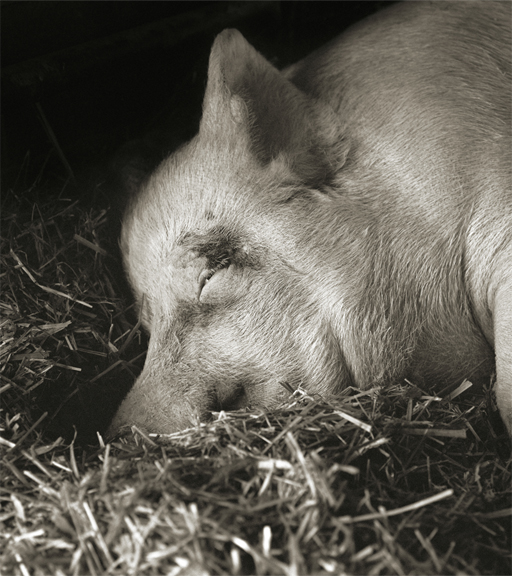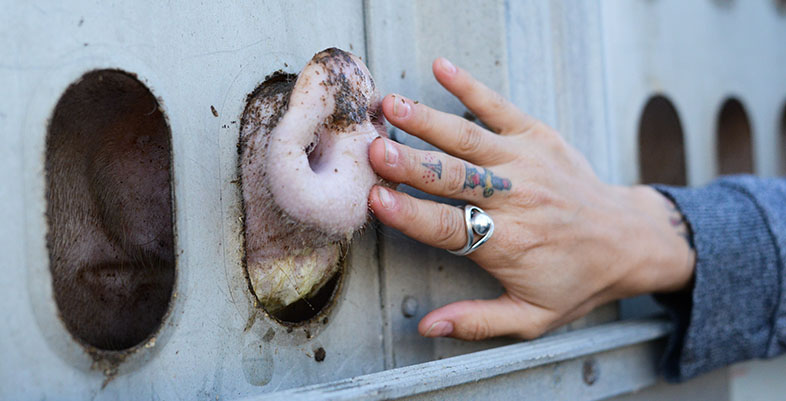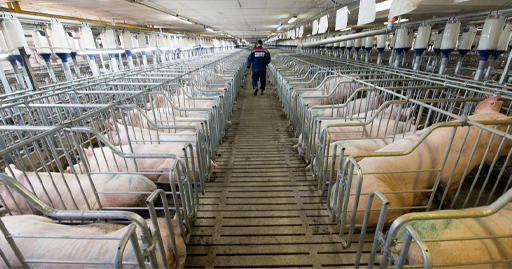4.1 Power-knowledge and the ‘disciplining’ of other animals
Foucault has been profoundly influential in the social sciences. Power is often assumed, argues Foucault (1998), to be repressive. It tends to be conceived as a resource used by powerful people, groups or institutions (such as the state) to stop less powerful people from doing something. By contrast, Foucault argued that power is productive rather than repressive: power does not stop things from happening, but rather it makes things happen. In Discipline and Punish, Foucault applies this insight to the experiences of criminals in nineteenth century prisons, arguing that prisons at that time were not devised to stop criminals from perpetrating criminal acts (this tends to be assumed when power is thought of as a repressive force) but were instead aimed at producing ‘docile bodies’ (1991, p. 138). By ‘docile bodies’, Foucault means that regimes disciplined prisoners to become docile and therefore useful citizens. A prisoner disciplined by a corrective penal regime could be remade into a productive working citizen, and therefore an asset rather than a burden to society. The practices by which prisoners were trained (such as the imposition of a strictly regimented timetable of daily activity) also produced knowledge about them. Prison authorities documented the extent to which prisoner’s behaviour changed in response to the prison regime, and this new knowledge could in turn reshape the treatment of prisoners. That is, power relations could be recalibrated in relation to knowledge produced about each prisoner.
Importantly, Foucault argues that the principles by which prisoners were disciplined – the interconnected application of a training regime (power) and the recording of observations about their behaviour (knowledge) – were transferred outside the prison setting within which they originated. Foucault describes a growing ‘carceral archipelago’ (1991, p. 298), or network of state institutions, such as army barracks, schools and hospitals, in which disciplinary principles were applied to produce, respectively, ‘docile’ soldiers, pupils or patients.
Foucault does not consider the extension of the carceral archipelago to nonhuman animals. However, its implications for how harms against nonhuman animals are understood, are profound (Chrulew and Wadiwel, 2016; Wadiwel, 2015). One of Foucault’s key innovations is the idea that because power is productive, not repressive, disciplinary regimes are focused on creating particular kinds of useful individuals (soldiers who obey officer’s commands, pupils who follow their teacher’s directions, for example). These insights have been applied to ‘factory farms’ as disciplinary institutions aimed at producing ‘docile’ nonhuman bodies (Cole, 2011; Novek, 2005; Coppin, 2003), that is, bodies disciplined so that they gain weight as efficiently as possible and thereby maximise profitability.
To achieve this goal, ‘factory farms’ discipline nonhuman animal behaviour by restricting bodily movement so that food intake is converted into weight gain rather than being expended on locomotion or social interaction. If farms are considered as disciplinary institutions in Foucault’s sense, bodily movement is a ‘waste’ of energy (and therefore of feed and the money used to buy it). The bottom line is that unrestricted movement reduces profitability. Figure 5 shows the disciplining of pigs’ bodies along these lines.
Simultaneously, the effects of power relations between the ‘farm’ and its nonhuman captives are recorded, so that a body of knowledge is built up about each animal. This knowledge is highly specific: individual animals in factory farms are ‘known’ according to how successfully they respond to the disciplinary regime – how much they eat, how much and how quickly they gain weight, and so on. This accumulation of knowledge can calibrate power relations to be yet more productive (adjusting the amount and type of feed, medication, temperature, and so on).
However, these nonhuman animals are not ‘known’ in the sense of ‘knowing’ a specific person as a unique individual with their own biography and personality. As a contrast to the ‘factory farmed’ pigs, the image below shows a pig called Teresa photographed at a sanctuary in New York, having been rescued from a slaughterhouse. Teresa is one of the subjects of Isa Leshko’s book Allowed to Grow Old (2019).

Activity 3
Compare for a moment the two pictures of pigs that you’ve seen in Figures 5 and 6. How would you feel about being asked to put Teresa into one of the farm cages? If that thought makes you feel uneasy, why do you think that might be?
Discussion
Imagery and language can on the one hand objectify nonhuman animals as something and on the other hand subjectify nonhuman animals as someone. The contrasting elements of Figures 4 and 5, and the differing amounts of biographical information available demonstrate this. To a certain extent, you may feel as you view them that your knowledge about pigs is being challenged or reshaped by the image of Teresa. Seeing Teresa photographed on her own and reading about her as an individual with a unique and detailed biography – her age, her gender implied by the name Teresa, the fact that she was rescued from slaughter – contrasts with the sheer number and apparent uniformity of pigs pictured in Figure 4. These pigs are harder to differentiate, especially as their confinement forces them to adopt a nearly uniform posture (an example of the disciplining of ‘docile bodies’ in Foucault’s sense).
By contrast, Teresa has chosen to lie in a position that she found comfortable. Teresa also appears to be sleepily looking directly at the viewer, giving the illusion of sharing a mutual gaze. None of the caged pigs can look into the camera. The indoor confinement, caging and crowding shown represents a power relation (‘factory farming’) that shapes knowledge about what pigs are (sources of food for humans). The traces of this power relation are absent from the photograph of Teresa, which therefore does not reinforce the ‘pigs-as-food’ power-knowledge relation.

